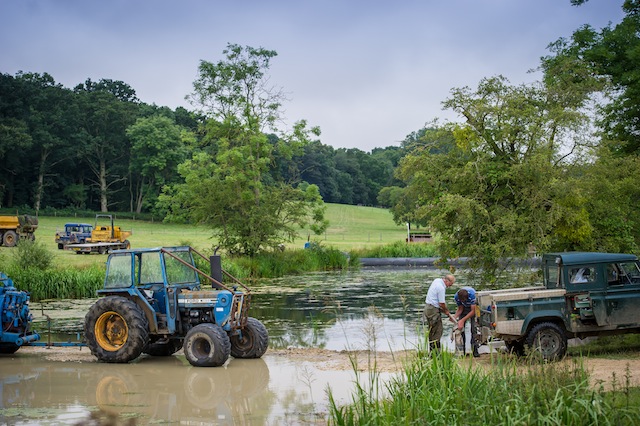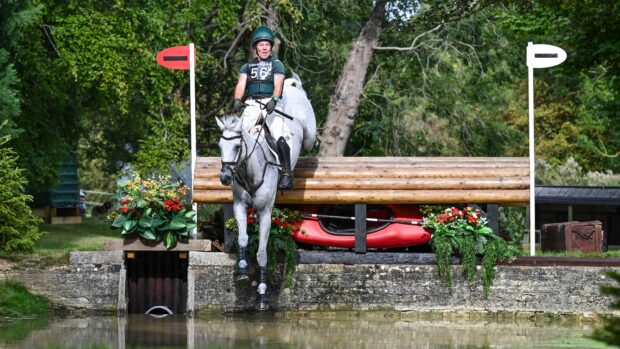Burghley Horse Trials organisers had to move rare crayfish and build a temporary dam in the lake yesterday (3 August) to make way for new features at this year’s event.
An ecologist moved 60 white-clawed crayfish to the other side of the Burghley lake, away from where the crowds will stand.
On Tuesday (2 August) a temporary dam made of two tarpulin tubes filled with water was put across the lake so one side could be drained and the crustaceans extracted.
The British native species has lived in the lake at Burghley for ten years, but needed to be moved for a new lake combination, and to allow the Land Rover driving experience into the water.
The work is also part of the park’s general maintenance to remove silt from the lake, and assess the crayfish population.

Julie Bywater from Bywater Ecology put on her waders, with clerk of the course Phillip Herbert, to move the creatures.
“The project took two days, with the installation of the aquadam allowing a portion of the lake to be dredged, with a further day spent in indentifying and sexing the crayfish before transporting them to their temporary home further down the lake,” said Mr Herbert.
The aquadam will be deflated after the competition, on 1-4 September, allowing the crayfish to migrate back to their original habitat.
Related articles:
- Zara Tindall and High Kingdom among early Burghley entries
- Your ‘Best of British’ event: 7 reasons we love Burghley Horse Trials
- Dog room service and four-poster beds: is this the most luxurious place to stay for Burghley?
The horse trials’ event director Elizabeth Inman said: “We are very much looking forward to this year’s Land Rover Burghley – hot off the heels of the Rio Olympic Games, we will be welcoming about 90 riders from 10 nations to compete for the 2016 title and substantial prize pot.
“The updates to this year’s course, designed by Captain Mark Phillips, and final list of riders will soon be revealed alongside exciting additions to this year’s event.”
The native white-clawed crayfish is classified as endangered, and protected under the Wildlife and Countryside Act 1981.
It is one of the UK’s largest freshwater invertebrates, but is under threat from the non-native American Signal crayfish, which spreads disease and causes habitat degradation and pollution.



